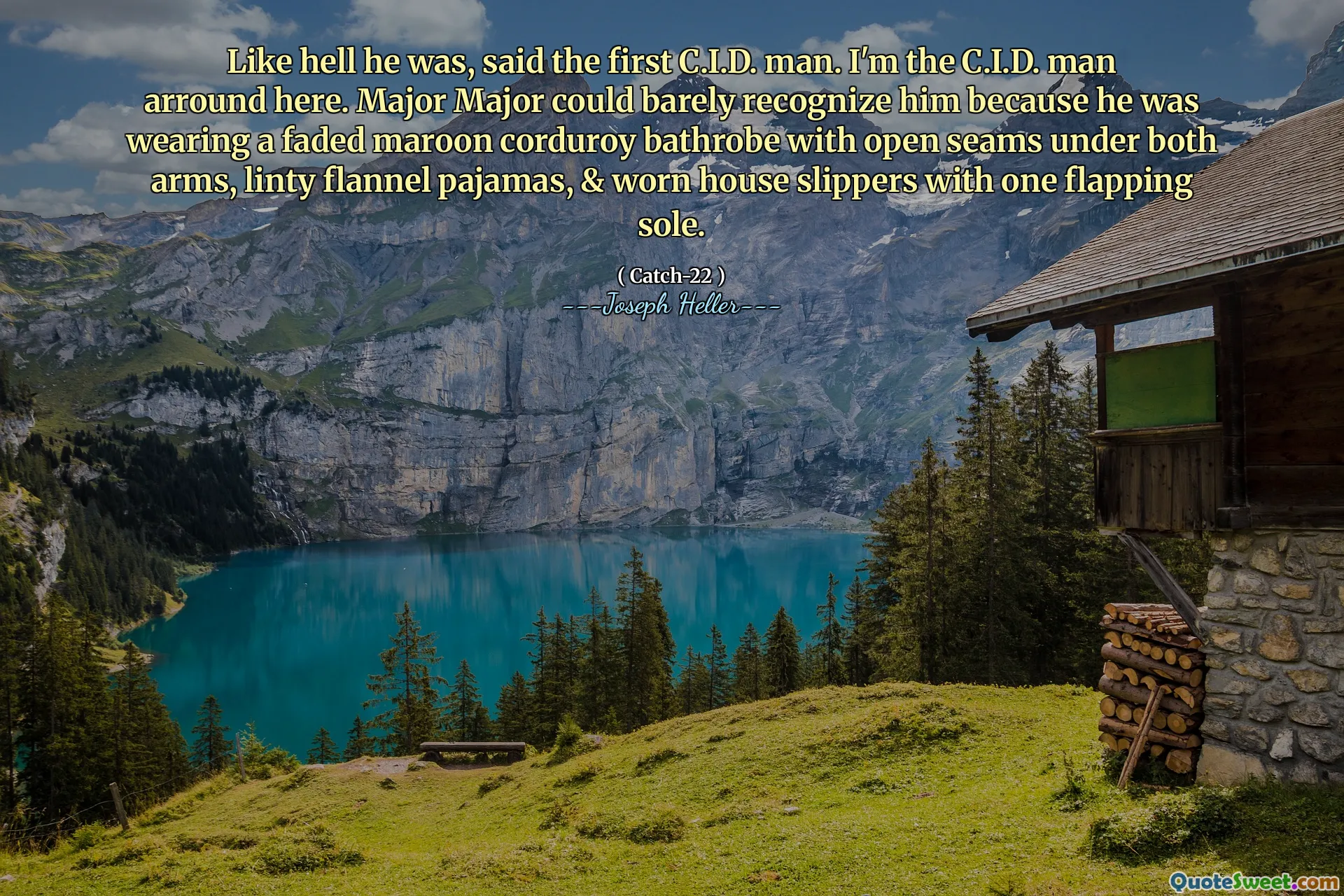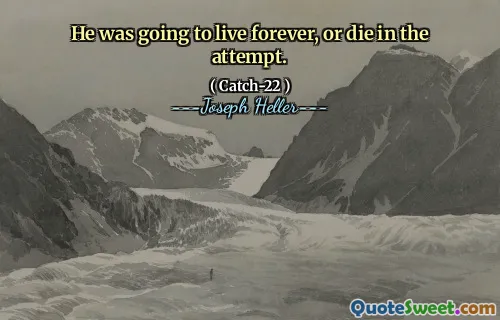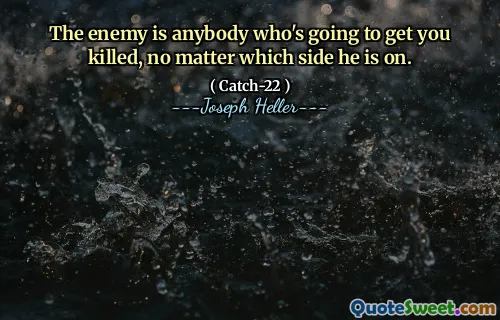
Like hell he was, said the first C.I.D. man. I'm the C.I.D. man arround here. Major Major could barely recognize him because he was wearing a faded maroon corduroy bathrobe with open seams under both arms, linty flannel pajamas, & worn house slippers with one flapping sole.
In Joseph Heller's "Catch-22," a C.I.D. officer asserts his authority with a bold declaration, emphasizing his role in the situation. This confident statement contrasts sharply with the appearance of Major Major, who is depicted in a disheveled state, wearing a faded bathrobe and old pajamas. The stark difference between the C.I.D. man's self-assurance and Major Major's unkempt look highlights the absurdity of the characters within the story.
This scene further illustrates the overarching theme of chaos and confusion in "Catch-22." While the C.I.D. man believes he holds power, Major Major's frail presence serves as a reminder of the vulnerability and disarray that permeate military life. Heller's portrayal of these characters encapsulates the irony and struggle of individuals navigating a nonsensical system, resonating with the reader's understanding of authority and identity.











